CENTENARY OF TRELAWNEY FARM AT MINTARO.
CHRISTMAS FESTIVITIES LIKELY.
Mr. George Sandow of “Trelawney”, St. Ives, Cornwall, born December 6th 1820, decided when he grew to manhood to immigrate to Australia with his family in the sailing vessel “Electric” on September 24th 1852.
COPPER MINING AT BURRA.
Being of the mining inclination, when landing in Australia, he made his way to the copper mining town of Redruth (Burra) of South Australia, the only means of transport being by bullock waggon. After a period at the mining centre the pioneer decided to take up land on the fertile flat known as Honey Suckle Flat in the upper Wakefield district about four miles south of Mintaro. Mintaro is a Spanish word meaning “resting place” where the men carting the copper ore to Port Wakefield stayed as a half-way house.
FOUNDATION OF “TREWLANEY”
On November 16th of the year 1854 George Sandow secured Certificate of Title 659180 Hundred of Upper Wakefield Sec. 237 from Joseph Gilbert for sum of £240 — 80 acres at the rate of £3 per acre. On the farm known as “Trelawney” was erected a solidly built stone house of six rooms which is standing to this day and now forms the centre portion of a re-modelled home.
At the death of the pioneer this property came to his son, John Michael Sandow, the father of Arthur Leo Sandow and now is occupied by the fourth generation, namely John Michael Sandow the second.
At the end of the War, their sons Ken and Ross, after serving in the R.A.A.F., came back and settled down on their farms.
A TRIP TO ENGLAND.
In 1949, Mr. and Mrs. Arthur Sandow, now of “St. Ives”, Glenunga, at that time at “Trelawney” Mintaro, made a trip to England and the Continent and particularly made it one of their chief interests to go to St. Ives, and look up Trelawney and any of the Sandow descendants. At the outset we found a street called Sandow Lane. The first Sandow contacted at St. Ives was the manager of the Co-operative Stores. The next one lived on a farm about 10 miles out from St. Ives, and the Sandow families at various ages had lived on the original portion of it for 700 years. They had three farms nearly joining one another, with the present generation of three sons living on them, — Milking at that time 150 cows and carrying other stock. After a cup of tea and a general chat we concluded there was definitely a relationship. Incidentally the Hotel at St. Ives “Tregenna Castle” at which we stayed had a main entrance hall measuring 183 feet by 21 feet wide and air-conditioned.
THE PIONEER.
Again referring to the pioneer. George Sandow, — in 1869, June 18th of the year, he transferred a building block on the corner of Section 237 for the purpose of erecting a church, to the trustees of the Bible Christian Society. He also added more 80 acre sections and his son, John Michael and the present Sandows have increased the holding of “Trelawneyy” (sic) to just under 3,000 acres. It was of grateful interest when we informed the English people over 1,000 lambs per year for ten years had been exported to England off Trelawney farm.
FIRST SUPERPHOSPHATE AND SEED DRILL.
If it may be stated, it is evident Sandows were rather progressive and early to seize an opportunity which appeared like a step forward. My father, (says Mr. A. L. Sandow of Glenunga) was one of the first, if not the first, to purchase the windmill for pumping water into an elevated tank for reticulation around the homestead, the first to introduce superphosphate and the seed drill in the district. The critical farmers who said it would cramp the growth of the wheat planting it in rows and spoil the ground were wrong. The next season proved the experiment to be successful in returning bags per acre instead of bushels. To bear out the convictions of the follow-on generations the number of tons of super used on Trelawney farm last year was 150 tons.
FIRST TOP-DRESSING BY AEROPLANE.
The present Sandow boys were the first to introduce top-dressing by aeroplane in the district. A ton of subterranean clover seed has been distributed over the property and they are still sowing it. As is easy to conclude being a farming area so original back to 1854, one can easily realise the results of super and grasses and the necessity of it. To give an illustration portion of the first Sec. 237 of 80 acres, a thirty acre paddock of lucerne was twice cut and baled last season, after which the paddock was shut up to be reaped for seed and the proceeds of the seed amounted to £1,000.
WHEAT AND WOOL.
With the inclusion of farming wheat, oats and barley and at the present progress of development, the number of sheep carried through the year and shorn were 4,100, using Bungaree rams and Dorset Horn when mating for export lambs. In addition a herd of 150 head of beef cattle, included in this number would be the Aberdeen Angus stud, known as “Winwara”, the ten females, due to calve, of which were purchased at the dispersal sale of the “Waratah” stud in June, 1952, from the Estate of the late A. L. Dunn of Asbourne near Strathalbyn.
CELEBRATING XMAS 1954.
To celebrate this Centenary Year, a family gathering is being arranged at Christmas time at “Trelawney.”
The “Northen (sic) Argus” wishes the Sandow family all the best for its Christmas festivities and re-union.
